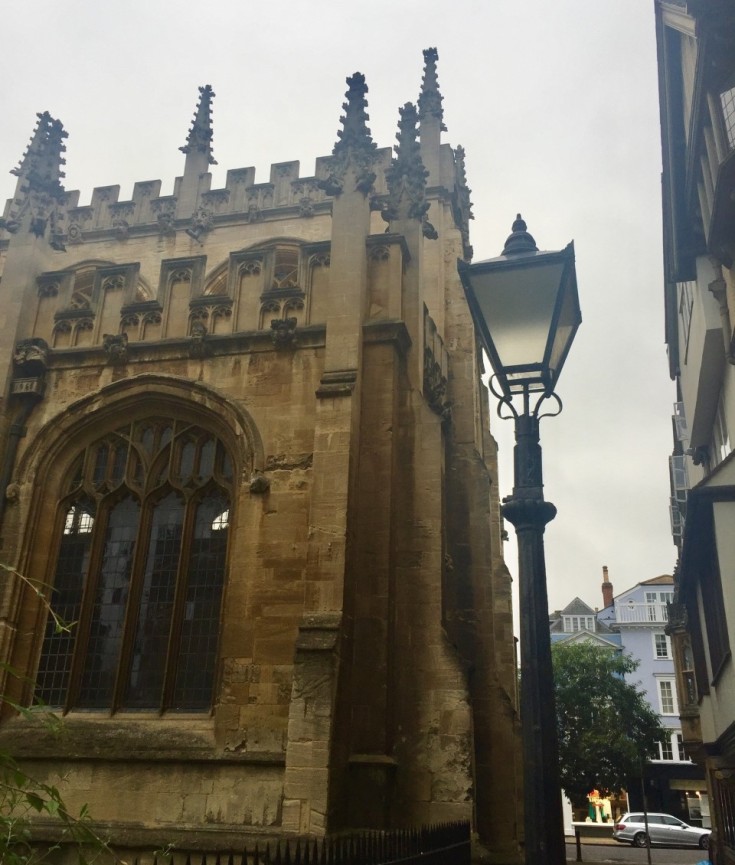“Let’s go on a Ghost Tour,” one of my friends said, pointing at an old sign on the sidewalk. “There’s a student discount.”
It was a cool evening in Oxford, England. We were attending a summer pre-law program at Oxford University and actively avoiding working on our final papers. So when my friend asked whether anyone would like to go on the tour, most of us of just said, “Why not.”
When we arrived for the tour, a man in a grey suit introduced himself as the guide. At exactly 7:30 pm, with four families and a student group from China, we set off. The guide told us about the ghosts who roamed the cobble-stoned streets and pointed out which Oxford colleges were haunted. But outside Oxford’s main library, the Bodleian, the tour guide stopped.
“Well, this isn’t really a ghost story, but still one I love to tell,” he said.
The guide walked into an alley leading to the main road and paused by an old lamppost.
“As some of you may know, C.S. Lewis, who wrote the Chronicles of Narnia, lived and taught in Oxford. It’s said that one snowy night, Lewis left the library and headed home. On his way, he walked through this alley and passed three things.” He pointed to the lamppost. “First, this street lamp.” The guide walked further down the alley and pointed to a door. Framing it were two statues of fauns. “Here,” he said, “fauns. And on the door, a lion.”
We walked closer. The chipped gold paint on the fawns reflected the light above the door. The statues, with curved horns nestled in their curls, clutched laurels in their hands and rested their hooves delicately on the doorframe. Carved into the dark wood of the door, a lion with an unruly mane stared into the alley.
“Lewis incorporated these three elements into a story,” the guide said. “Lucy first sees a lamppost when she enters Narnia. She meets Mr. Tumnus, a faun. And of course, the lion leader, Aslan.”
As we snapped photos, the guide continued, “People like to think that as C.S. Lewis walked through this alley, with the snow falling around him, he created Narnia. I’d like to think so too.” He clapped his hands together. “Now, who wants to hear where the phrase ‘dead-ringer’ came from?”
We continued the tour, but I wanted to hear more about C.S. Lewis’s walk home. I didn’t have to wait long. Outside a local pub, The Eagle and Child, an informational sign was posted about a literary group C.S. Lewis was a part of: The Inklings.
According to the sign, the Inklings were a group of Oxford teachers and friends who met weekly during the school term to talk about literature, particularly fantasy. C.S. Lewis was an Inkling, as was his close friend, J.R.R. Tolkien, the author of The Lord of the Rings and The Hobbit. For a span of time, the Inklings held weekly meetings at The Eagle and Child to read their work aloud. One of those works was Lewis’s The Lion, the Witch and the Wardrobe.
We visited The Eagle and Child. Its walls were plastered with photographs and quotes from the Inklings’ works. The room where the Inklings used to sit, named the “Rabbit Room,” was so crowded with tourists we were forced to sit in the back. But even in the back room, the walls were decorated with yellowed posters of The Lord of the Rings. Written on a chalkboard outside the kitchen was a quote by C.S. Lewis: “My happiest hours are spent with three or four old friends in old clothes, tramping together, and putting up in small pubs.”
The Eagle and Child is a small pub—dark, narrow, and cramped. But despite the crowds, it was not difficult to imagine the Inklings gathered in a small cluster, talking about literature over stacks of unfinished manuscripts. I wondered whether anyone else in the pub during their meetings looked strangely over at their table when Tolkien spoke about a Middle Earth and a Dark Lord with a ring.
There is no doubt that Oxford is magical. You could write a story based on every one of its cobble-stoned streets and the beautiful colleges that make it famous. However, the simple pub where the Inklings used to sit is nearly as magical. After all, Tolkien and Lewis were real life titans who created some of the most famous fantasy worlds in literature. But in the dim lights of a pub and in a narrow alley during a Ghost Tour, these titans become mortal—less like legendary figures and more like the people you pass on the street.
When the titans are mortal, it is easier to imagine yourself as one of them. You begin to wonder whether the group of friends sitting in the corner of your local coffee shop are the next Inklings. You begin to wonder whether the man who just stepped out onto the street in front you just created a world in an alley. You wonder whether you might be able to.
The Inklings are proof great stories can be created in conversations over drinks; elaborate worlds can be inspired just by stepping outside the library.
So from now on, as you walk home, I challenge you to pick three things you see. Pay attention.
Choose carefully. Who knows, you might just create a world with them.
-Laila Ujayli

